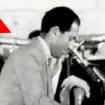Artist In The Dock - George Gershwin
George Gershwin brought jazzy rhythms into the concert hall with Rhapsody In Blue. But did he fail to realise that his flair for writing popular songs didn’t always translate well into symphonic works?
When George Gershwin embedded the rhythms and harmonies of Broadway, jazz and American folklore into works designed for the concert hall and opera house, he grabbed American music by the vernaculars.
His 1924 Rhapsody In Blue popularised emerging concepts of the jazz-meets-classical crossover work, and his more elaborate Concerto In F and An American In Paris didn’t so much cross over as fully absorb jazz into an ambitious stew of neo-Romantic opulence and Ravel-derived harmonic splendour.
Porgy And Bess, Gershwin’s 1935 operatic masterwork, wove it all into a tightly interlaced score described by conductor Nikolaus Harnoncourt as “more subtle than Wagner.” And feeding all those achievements was Gershwin’s experiences as a Tin Pan Alley tunesmith, the source of songs like I Got Rhythm and Someone To Watch Over Me that remain the bedrock of American song.
THE PROSECUTION
Within the milieu that produced songwriters like Cole Porter and Irving Berlin, Gershwin was truly without compare. But he failed to grasp that the basic building blocks of popular song form, fine for a three-minute song, were not grounding enough to sustain extended-form orchestral works over the long haul.
Leonard Bernstein was spot-on when he complained about the “structural inefficiency” and “artificial transitions” of Rhapsody In Blue – Gershwin’s show-stopping tunes do indeed sound crudely nailed together, with fumbled transitionary passages and a rather contrived “big finish”.
The later Concerto in F is overstacked with fussy orchestral detail that can’t always be heard; the streamlined orchestral style that Gershwin would perfect in An American In Paris was a long time coming.
When Schoenberg and Ravel rejected his requests for composition lessons, they wisely recognised that the essentials of Gershwin’s art was instinctual and beyond learning.
The prosecuting counsel therefore accuses Gershwin of threatening the essence of his art through his fixation on becoming a “proper” composer.
THE DEFENCE
Let’s not forget Bernstein’s disclaimer to his criticism: “What’s right with Rhapsody In Blue is that each of those inefficiently connected episodes is in itself melodically inspired, harmonically truthful, rhythmically authentic.”
Gershwin’s evocation of high-rise bustle and Jazz Age rhythms were acutely heard and it’s impossible to walk through Manhattan without that curtain-raising opening clarinet glissando entering your imagination. Not for nothing has Rhapsody In Blue become New York’s unofficial anthem.
Yes, fair point, the piece’s episodic structure is functional rather than inspired but, via the more structurally robust Concerto In F, Gershwin hit gold with An American In Paris, which unfolds with cinematic precision scene by scene.
Porgy And Bess is one of the 20th century’s most accomplished and visionary operas – and as Summertime and It Ain’t Necessarily So testify, Gershwin never lost his svengali melodic touch. His songs are endlessly re-visited and re-imagined by louche crooners and militant jazz musicians alike, and would have guaranteed his lasting legacy even if he had never composed a note for the concert stage.
THE VERDICT – A COMPOSER WHO GOT AWAY WITH “BLUE” MURDER
Rhapsody In Blue and the Concerto In F are compositional bumble bees – aerodynamically they really shouldn’t fly, but Gershwin’s effortless melodic charm, and his knack of always staying on the right side of bad taste, means they invariably come up smelling of honey.
Honesty and sincerity were Gershwin’s greatest assets. Ditching the emotional potency of his Broadway-honed song writing skills would never have worked out because that’s who he was. Gershwin found a workable solution to ensure all sides of his musicianship could coexist – even ‘fessing up to the fact that the improvisational impulse of jazz and the formality of composed music was never going to be an entirely comfortable fit.
1898: Born in Brooklyn to Russian Jewish parents; his birth name is Jacob Gershowitz
1908: Attends a violin recital; becomes fascinated by music and gets a piano
1914: After piano lessons, Gershwin earns $15 a week as a song plugger on Tin Pan Alley, New York City’s popular song district
1918: Harms publishing company offers him $35 a week for the rights to any songs he might compose in future; that year, his songs appear in three Broadway shows
1924: Gershwin hits the big time: Rhapsody In Blue is premiered and his musical Lady Be Good is a smash on Broadway
1925: His Concerto In F is premiered at Carnegie Hall
1927: Gershwin visits Paris and meets Ravel and Berg; the seeds are sown for An American In Paris
1934: Begins to write Porgy And Bess
1937: Dies suddenly from a brain tumour
















